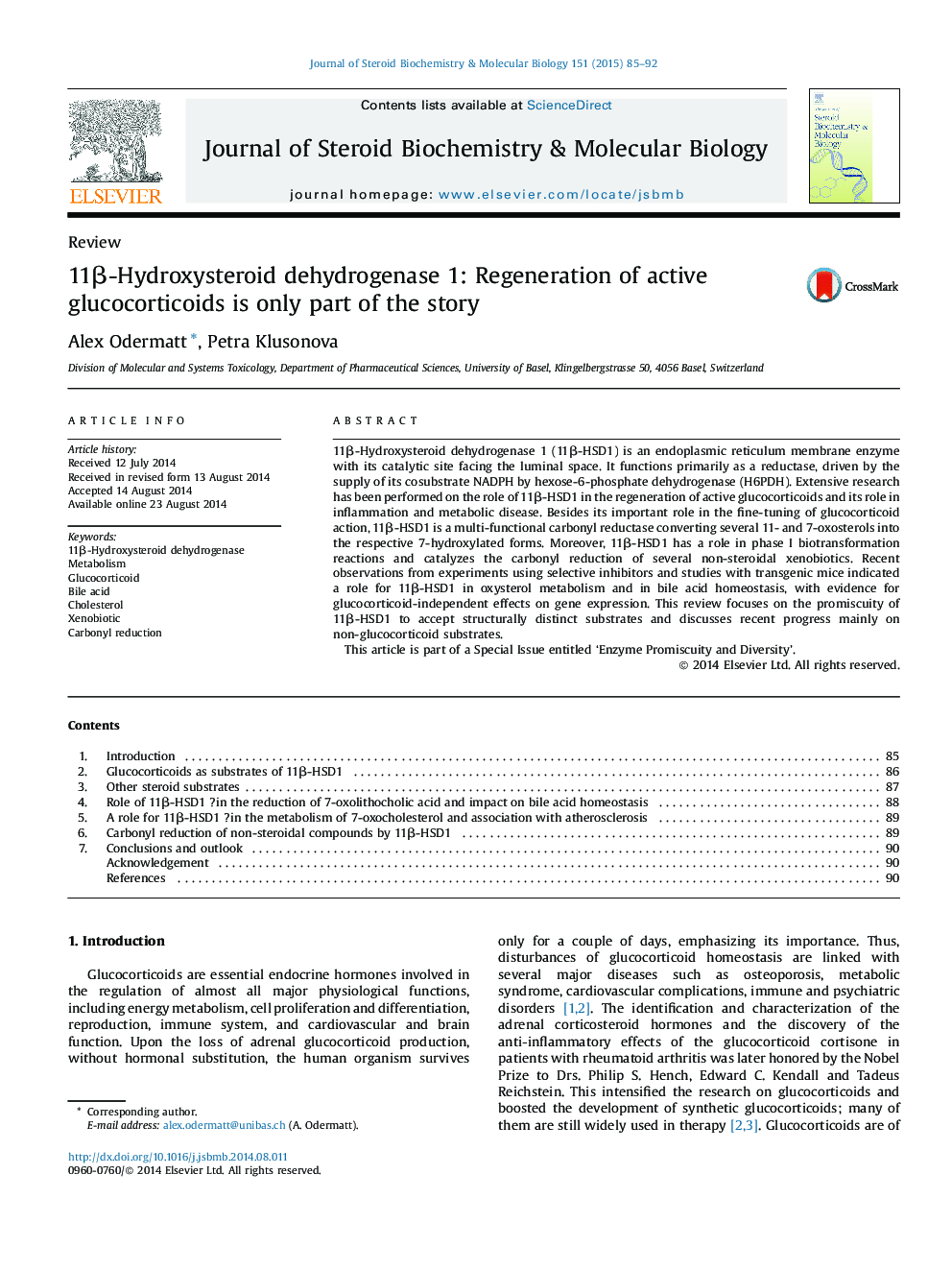| Article ID | Journal | Published Year | Pages | File Type |
|---|---|---|---|---|
| 1991419 | The Journal of Steroid Biochemistry and Molecular Biology | 2015 | 8 Pages |
•Review of recent literature on 11β-HSD1 functions.•Review of the role of 11β-HSD1 in the metabolism of 7-oxocholesterol.•Review of the role of 11β-HSD1 in bile acid homeostasis.•Review of the role of 11β-HSD1 in the carbonyl reduction of xenobiotics.
11β-Hydroxysteroid dehydrogenase 1 (11β-HSD1) is an endoplasmic reticulum membrane enzyme with its catalytic site facing the luminal space. It functions primarily as a reductase, driven by the supply of its cosubstrate NADPH by hexose-6-phosphate dehydrogenase (H6PDH). Extensive research has been performed on the role of 11β-HSD1 in the regeneration of active glucocorticoids and its role in inflammation and metabolic disease. Besides its important role in the fine-tuning of glucocorticoid action, 11β-HSD1 is a multi-functional carbonyl reductase converting several 11- and 7-oxosterols into the respective 7-hydroxylated forms. Moreover, 11β-HSD1 has a role in phase I biotransformation reactions and catalyzes the carbonyl reduction of several non-steroidal xenobiotics. Recent observations from experiments using selective inhibitors and studies with transgenic mice indicated a role for 11β-HSD1 in oxysterol metabolism and in bile acid homeostasis, with evidence for glucocorticoid-independent effects on gene expression. This review focuses on the promiscuity of 11β-HSD1 to accept structurally distinct substrates and discusses recent progress mainly on non-glucocorticoid substrates.This article is part of a Special Issue entitled ‘Enzyme Promiscuity and Diversity’.
